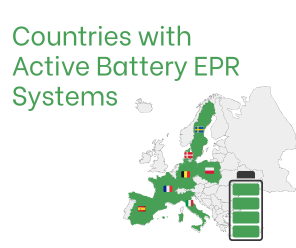E-Invoicing vs E-Billing: Decoding the Difference
E-Invoicing vs E-Billing: Decoding the Difference
E-Invoicing
E-invoicing, or electronic invoicing, encompasses the entire invoice lifecycle, from creation and delivery to processing and eventual payment. It’s more than just sending a PDF invoice via email; it involves exchanging structured data between systems, enabling automation and standardization.
E-invoicing is the exchange of invoice data between suppliers and buyers in a structured electronic format, allowing for automated processing.
The typical e-invoicing process involves:
- Invoice Creation: The supplier creates the invoice in a structured digital format (e.g., XML, EDI).
- Transmission: The invoice is transmitted electronically to the buyer’s system, often through a secure network or platform.
- Reception and Processing: The buyer’s system automatically receives and processes the invoice data, eliminating manual data entry.
- Approval: The buyer verifies the invoice details and approves it for payment.
- Payment: The payment is initiated, often through a separate e-payment system (which may or may not be integrated).
- Reconciliation: Both the buyer and supplier reconcile their records based on the exchanged data.
Common e-invoicing formats include XML (Extensible Markup Language), EDI (Electronic Data Interchange), and increasingly, standards like PEPPOL (Pan-European Public Procurement Online).
E-invoicing often involves adherence to specific legal and regulatory requirements, such as digital signatures, VAT compliance, and data security standards.
E-Billing
E-billing, or electronic billing, focuses specifically on the payment aspect of the invoicing process. It’s primarily about facilitating the electronic payment of an invoice, which may or may not have been received electronically.
E-billing refers to the electronic presentation and payment of bills or invoices.
The e-billing process typically involves:
- Invoice Presentation: The invoice, which could be in electronic or paper format, is presented to the buyer.
- Payment Authorization: The buyer authorizes payment through an electronic payment method (e.g., credit card, direct debit, online banking).
- Payment Processing: The payment is processed electronically, and funds are transferred from the buyer’s account to the supplier’s account.
- Payment Confirmation: Both the buyer and supplier receive confirmation of the payment.
E-billing’s primary focus is on simplifying and speeding up the payment process.
Key Differences:
Scope: The most significant difference lies in the scope. E-invoicing covers the entire invoice lifecycle, from creation to payment and reconciliation. E-billing, on the other hand, concentrates solely on the payment phase. E-invoicing often includes e-billing as part of its process, but e-billing can also be used for invoices received in traditional formats.
Process: E-invoicing involves the automated exchange of structured data, enabling system-to-system communication. E-billing, while electronic, often involves more manual steps, particularly if the initial invoice is in paper format. E-invoicing streamlines the entire process; e-billing streamlines payment.
Purpose: E-invoicing aims to standardize and automate the exchange and processing of invoices, leading to increased efficiency, reduced errors, and cost savings. E-billing’s primary purpose is to facilitate and expedite payments, making it easier for buyers to pay and for suppliers to receive funds.
Benefits and Drawbacks
| Feature | E-Invoicing | E-Billing |
| Scope | Full invoice lifecycle | Payment only |
| Automation | High | Lower (often manual steps involved) |
| Data Exchange | Structured data exchange | May involve unstructured data (e.g., PDF invoices) |
| Efficiency | High (reduced manual work) | Moderate (faster payments) |
| Cost Savings | Significant (reduced processing costs) | Moderate (primarily related to payment processing) |
| Integration | Often requires system integration | May not require deep integration |
| Complexity | Can be complex to implement initially | Simpler to implement |
E-invoicing and e-billing are related but distinct concepts. E-invoicing offers a comprehensive solution for managing the entire invoice process, while e-billing focuses specifically on electronic payment facilitation. Understanding the difference between these two approaches is crucial for businesses looking to optimize their financial operations and choose the right solution for their needs. E-invoicing offers greater long-term efficiency and cost savings due to its automation capabilities, while e-billing provides a more immediate improvement in payment processing speed.



